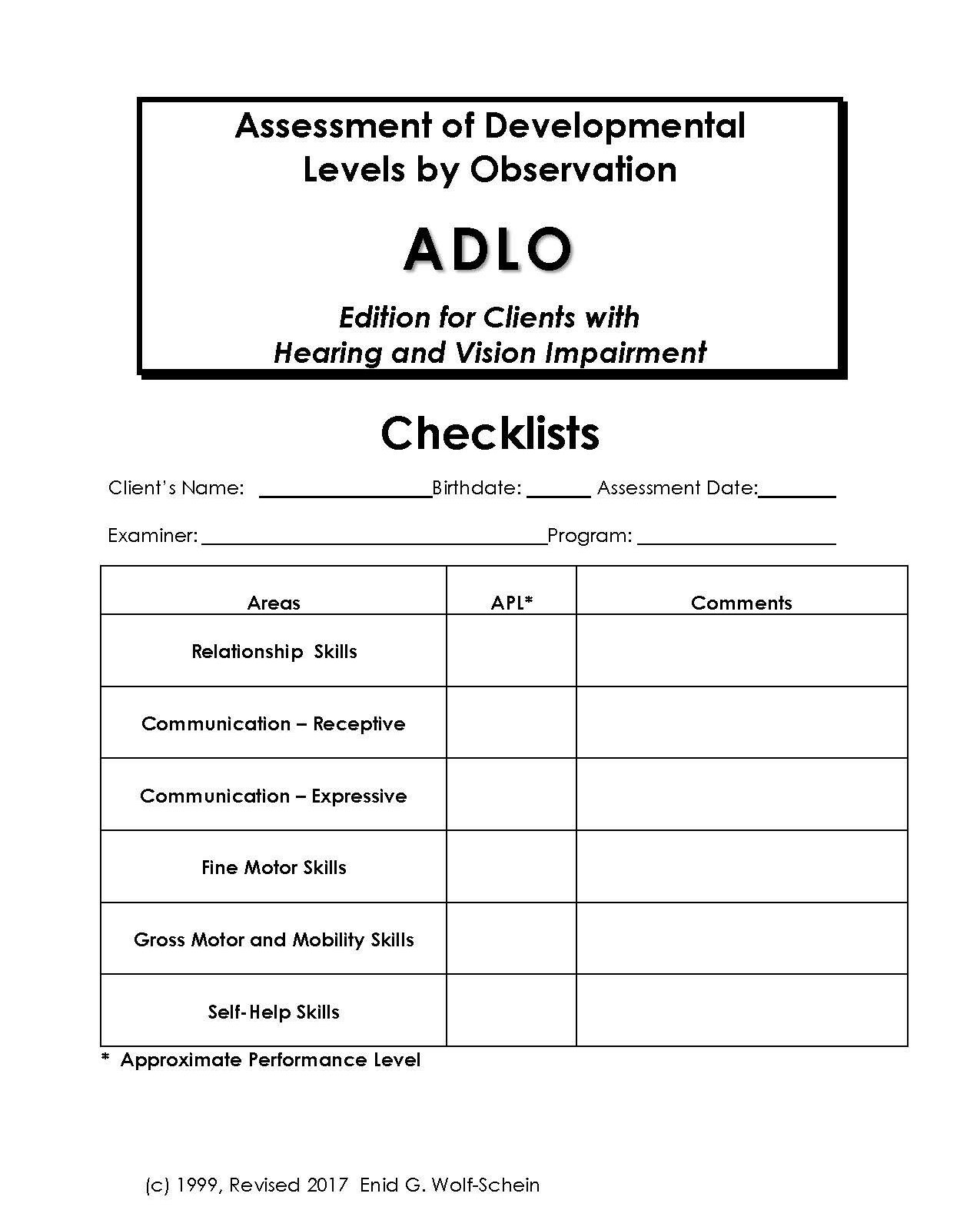Please specify the quantity of product(s).



Assessment of Developmental Levels Observation (ADLO) of Individuals with Hearing and Vision Impairment
| Item | Product | Price | QTY |
|---|---|---|---|
| 37033M | Assessment of Developmental Levels Observation (ADLO) Manual | $25.00 | |
| 37033R | ADLO Record Forms, Pk/15 | $20.00 |
Developmental Assessment of Individuals with Hearing and Vision Problems
Enid G. Wolf-Schein, Ed. D.
Persons: Assessors may include a psychologist, teacher, therapist or other individual working with the client or who may be responsible for assessment.
Special edition for Clients with Hearing and vision Impairments
ADLO Assessment of Developmental Levels by Observation has been developed to assess the current performance levels of clients who have impairments of both hearing and vision. Such impairments, in combination, impede the ability of such clients to respond in the same manner as those without a sensory disability. In using ADLO the tactile sense, and the use of signs, gestures, and representative object is emphasized. Each item has been reviewed for its importance to the development of clients with dual sensory impairments, and to assure that the client could respond to each item. Because the term “Deafblind” includes clients with a range of sensory abilities, items take into account thos persons with no usable hearing or vision, as well as others who see or hear to some degree.
Rating Using the ADLO Checklist
The primary purpose of ADLO is to ascertain the specific performance abilities of a client and to use the information to begin developing a program to fill in gaps and move him/her forward to greater competence. Age levels as such are usually misleading with this population because of the physical and environmental deprivation caused by the sensory loss. However, because a developmental level may be required for administrative purposes, we suggest the following procedure to estimate an “Approximate Developmental Age.” The age levels described below have been determined based on what an individual who cannot see or hear is most likely to do at a given age. However, there is no “typical client.”
|
Approximate time |
Activities to include: |
|
Five minutes
|
UNSSTRUCTURED TIME. When intervenor is supervising play or work activities but not directly intervening. The purpose is to observe how:
|
|
15 minutes |
STRUCTURED ACTIVITY. The intervenor introduces a task or object, or teaches any skill, new or otherwise. Include fine and gross motor tasks (puzzle, rolling or tossing ball, building blocks, stringing beads, imitating jumping, clapping, etc. Allow client time to work things out, but do not spend a great deal of time on any one activity. Present open ended “conversation” and give the client time for creative efforts.
|
|
10 minutes |
SELF-CARE. Always include eating —note how the client requests food; prepares / eats / cleans up, Include dressing —allow client opportunity to ty alone to omplete a dressing task. Personal care such as hair combing, tooth brushing, and housekeeping are also important.
|